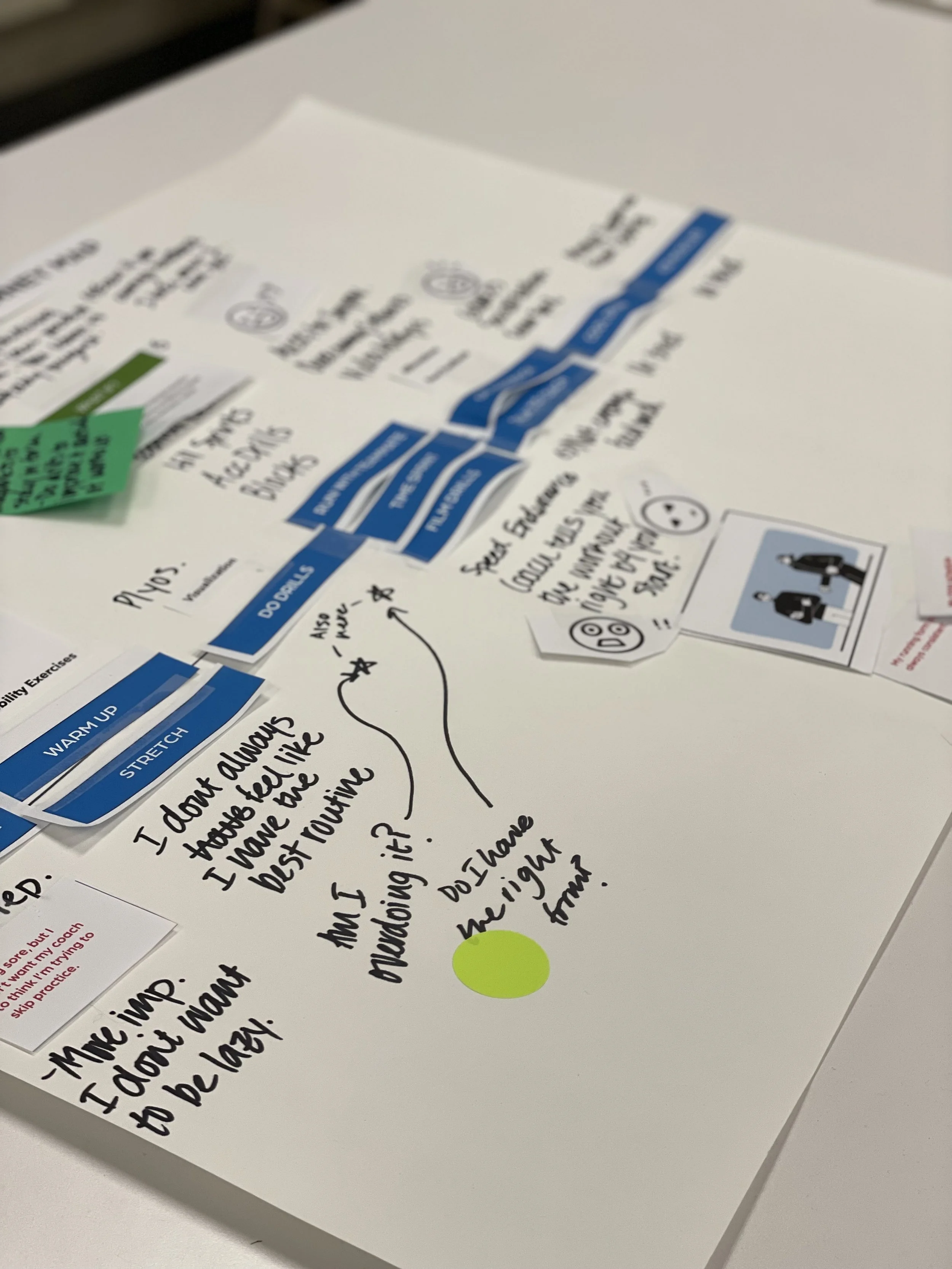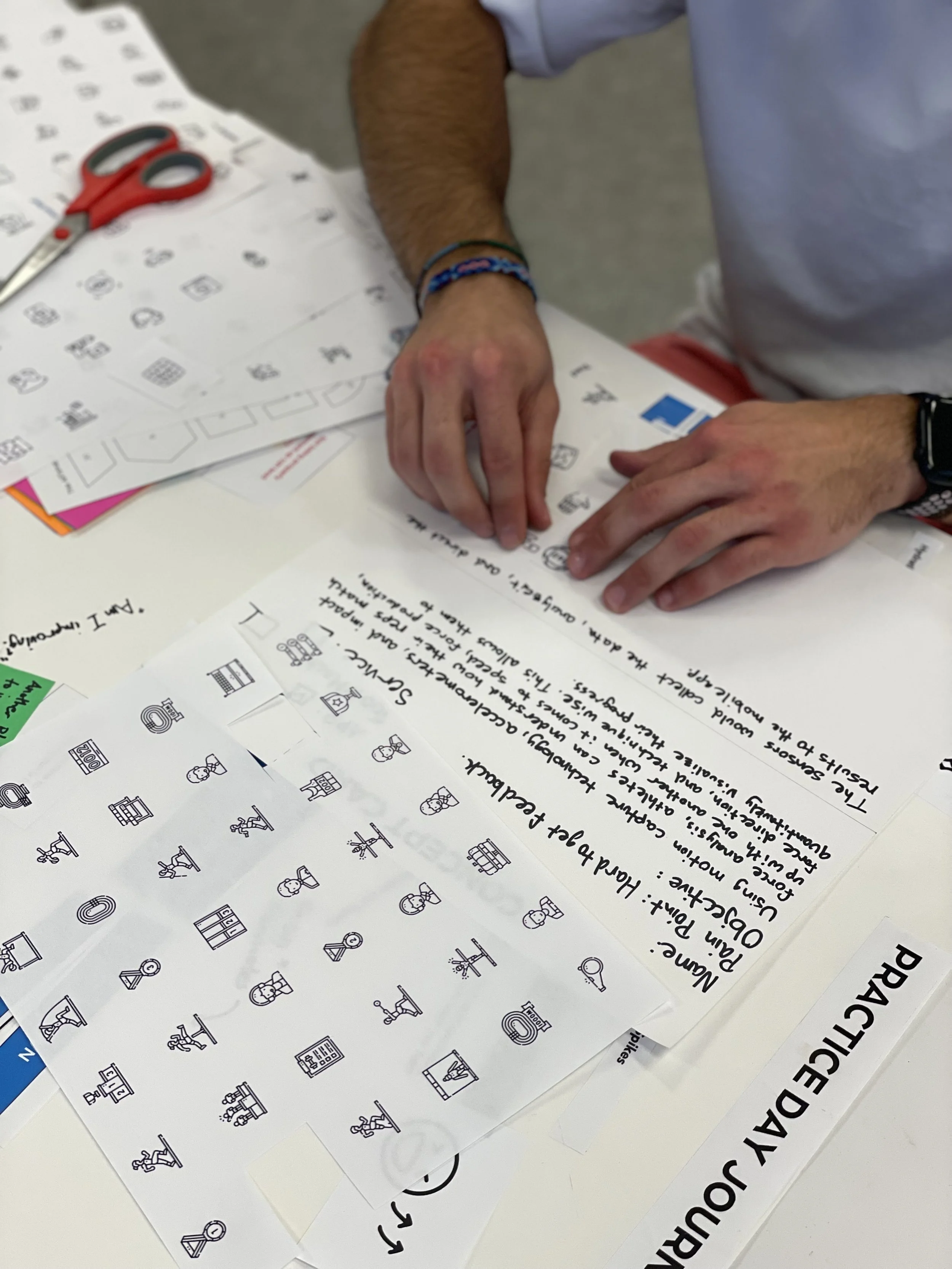DESIGN PROCESS | ideate - phase 1
workshop DETails
IN THIS STEP YOU WILL FIND
The key steps I took to prepare for my co-design workshop with sprinters. It included designing a comprehensive toolkit for journey mapping, and concept card activities, and conducting a pilot test with classmates and my professor to refine instructions and the overall process.
PREPPING FOR A WORKSHOP
-
IRB APPROVAL
I got approval from the Institutional Review Board (IRB) Office to recruit and work with sprinters during my co-design workshops.
-
recruitment
I recruited 11 sprinters from the Ohio State Running Club and successfully scheduled co-design workshops with 5 participants.
-
toolkit
I decided upon workshop materials to inspire creativity, discussion, and innovative thinking.
-
Pilot Testing
I tested my toolkit materials to get feedback on the workshop activity, my instructions, and the toolkit items themselves.
IRB exempt APProval
Research can qualify for an exemption if it is no more than minimal risk and all of the research procedures fit within one or more of the exemption categories in the federal IRB regulations. Studies that qualify for exemption must be submitted to the IRB for review before starting the research.
DOCUMENTS INCLUDED
Recruitment Script
Workshop Protocol
Facilitator Guide
Consent form
RECRUITMENT
Recruitment was a difficult process, as collegiate sprinters are in classes, at practice, and track and field has two seasons, indoor (fall), and outdoor (spring). I recruited the participants for my workshop from the Ohio State Running Club, an intramural team.
Participant Demographics
3 female sprinters
2 male sprinters
year of experience 2-6+
WORKSHOP TOOLKIT
JOURNEY
MAPPING
CONCEPT
GENERATION
PILOT TESTING
After designing the toolkit for the journey mapping and concept card activities, I ran two pilot tests with three classmates and my professor, for each test, to gather feedback on the instructions, process, and overall preferences. This practice run gave me valuable insights and allowed me to fine-tune the experience before the real workshop.
FEEDBACK:
Participants needed an example journey map to have an idea of where to place the different toolkit items.
Participants suggested including a key or “cheat sheet.”
Participants enjoyed cutting out objects rather than sorting through pre-cut items.
Participants appreciated being encouraged to come up with solutions to pain points.
Next step
Once this process was complete, I moved on to scheduling the co-design workshops with the sprinters I recruited from the Ohio State Running Club.
-
BACK
-
HOME
-
FORWARD






